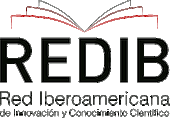Ionizing radiation: Knowledge frontier and technological challenges
DOI:
https://doi.org/10.25044/25392190.507Keywords:
ionizing radiations, radioisotopes, nuclear energy, nuclear medicine, radiopharmaceuticals.Abstract
This paper refers to the role of ionizing radiation in nature and its main applications are discussed: energy production, nuclear medicine, water resources management and development of drugs. The progress and the challenges facing their use, particularly in technology to develop nuclear energy and conventional basis of controlled thermonuclear reaction are indicated. Attention to imaging modalities in nuclear medicine, the role of computers that combine good anatomical resolution sensitivity such as Computed Tomography / Positron Emission Tomography in Molecular Imaging, the use of radiopharmaceuticals in radionuclidic therapy is provided, both as part Molecular Medicine individualized attention directed approaches. Many of the examples relate to work done in Cuba. Finally, we reflect that science has to respond to the challenges related technologies routing. It is considered that the main challenge is to break the psychological barrier that prevents man to live in peace, take care of your planet, equitably distribute the fruits of their labor.Downloads
References
Aggarwal, P.K., Froehlich, K., Kulkarni, K.M. (2007). Environmental Isotopes in Ground water Studies – eolss. Recuperado de: http://www.eolss.net/Sample-Chapters/C07/E2- 09-03-06.pdf
Asamblea General las Naciones Unidas (2011). Recuperado de: http://www.um.es/prinum/rn12/files/2012_A%C3%B1o_Internacional_Energia_Sostenible_Declaracion.pdf
Asamblea General de Naciones Unidas (2012). Resolución 65/151. Año Internacional de la Energía Sostenible para Todos. Recuperado de: http://www.un.org/es/events/sustainableenergyforall/
Bishop, B. (2013). Laser fusion experiments yields record energy at Lawrence Livermore's National Ignition Facility. Recuperado de: https://www.llnl.gov/news/newsreleases/2013/Aug/NR-13-08-04.html.
Borroto, J. (2003). Comportamiento del Tc99m como radiotrazador en estudios hidrológicos a corto plazo. Tesis en opción al grado de Doctor en Ciencias Químicas, Ciudad de la Habana, Cuba.
Cano, D. (2008). Revista Española de Física, Enero-Marzo. Recuperado de: http://www.rsef.org
Comitee on the State of Sciences of Nuclear Medicine Advancing Nuclear Medicine (2007). Through Innovation. Washington D.C., USA: The National
Academic Press.
Cruz Arencibia J. (2013). Fosfato de Cromo (III) marcado con diferentes radionúclidos para uso en Radiosinoviortesis, Tesis en opción al título de Doctor en Ciencias Farmacéuticas. La Habana, Cuba.
Domínguez, J., Borroto, J., Abreu, A. M., Ortueta M., Pérez, E. (1998). «Medición de caudal en el río Almendares empleando 99mTc como radiotrazador». Serie Contribución a la Educación y Protección Ambiental. Hombre y Medio Ambiente, 173. Habana, Cuba: Editorial Academia.
Hernández I. (2015). «Investigaciones no clínicas en el Centro de Isótopos en función de la industria farmacéutica y biotecnológica». Nucleus 52(35).
H. Zaidi. (2006). «The quest for the ideal anatomolecular imaging fusion tool». Biomed Imaging Interv J. 2(4).
IAEA, (2006). Informe del Director General, G.C. Examen de la tecnología nuclear. (50)/INF/3.
International Atomic Energy Agency (2003). Managing Water Resources using Isotope Hydrology, International Atomic Energy Agency. Information Series. Recuperado de: http://www.iaea.org/sites/default/files/water.pdf
Leyva, R., Perera, A., Morín, J. A. (2012). «Radiofármacos en inmunocentelleografía y Radioinmunoterapia». Nucleus 52(68).
Milántiev V., Temkó S. Física del plasma. Colección Física al alcance de todos, editorial Mir (1987).
Morín, J.A. (2006). «Pertinencia y riesgo de las aplicaciones nucleares». Nucleus, 40(4).
Phelps, M.E., (2000). «Positron emission tomography provides molecular imaging of biological processes». PNAS 97 (16), pp. 9226.
Stosic, Borko D. (1961). Use of isotopes in hydrology - International Atomic Energy Agency. Recuperado de: http://www.iaea.org/Publications/Magazines/Bulletin/Bull042/04205902124.pdf
Thakur, M., Lentle, B.C. (2006). Report of a Summit on Molecular Imaging.Department of Radiology, Division of Nuclear Medicine, Thomas Jefferson University Medical College. Ajronline.
Townsend, D.W., Carney, J.P., Yap JT, et al. (2004). «PET/CT today and tomorrow». Nucl Med J. 45 Suppl 1,4S-14S.
Vilches, G. & Pérez, D. (2011). Año Internacional de la Energía Sostenible para todos: La transición de las energías no renovables a la energía sostenible. Revista Española de Física, 26 (4).
Young T. Hong et al. (2013). «Amyloid imaging with carbon 11-labeled Pittsburgh compound B for traumatic brain injury». JAMA Neurol. 71 (1), 3-31.
Downloads
Published
How to Cite
Issue
Section








